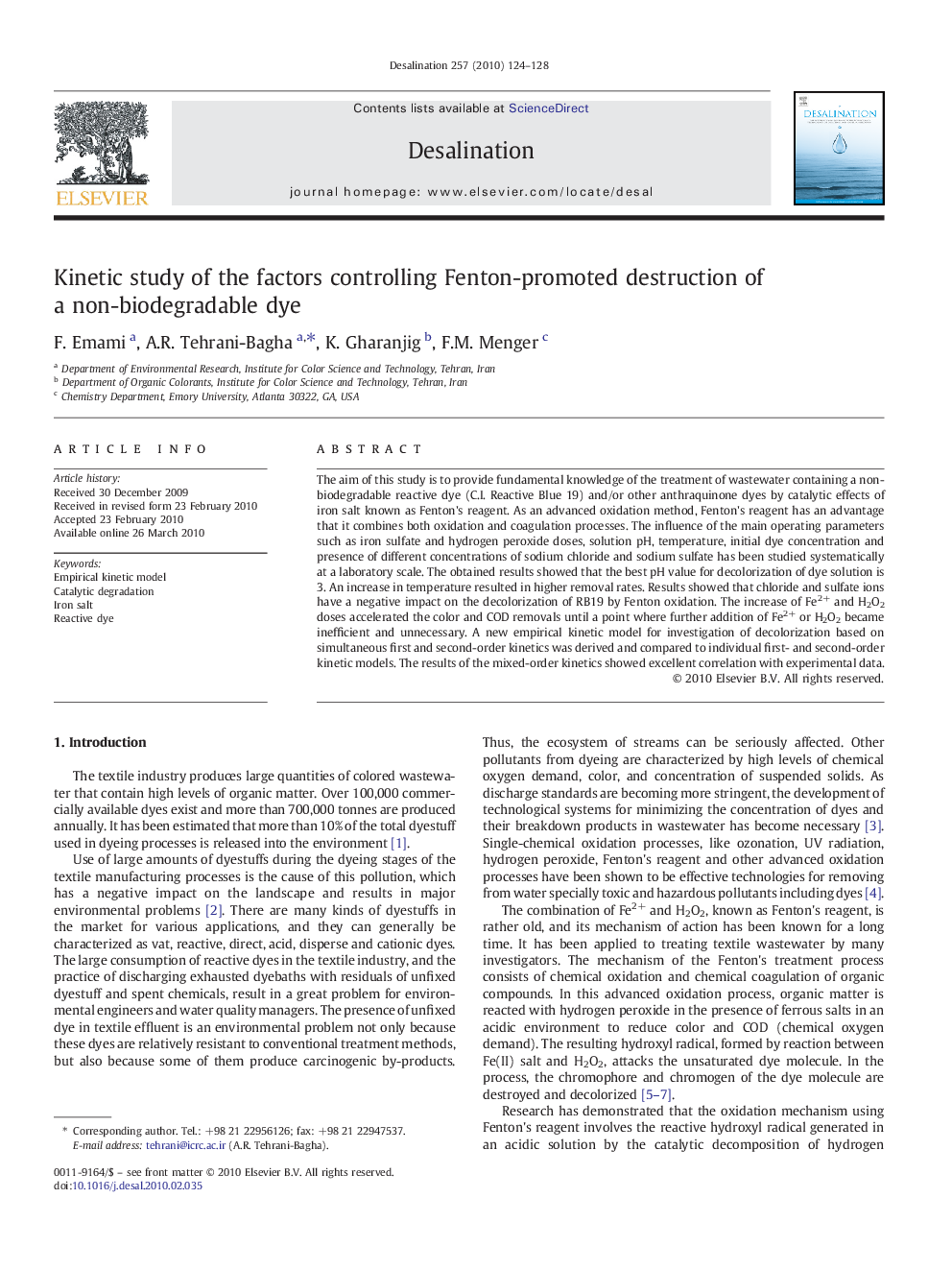| Article ID | Journal | Published Year | Pages | File Type |
|---|---|---|---|---|
| 625732 | Desalination | 2010 | 5 Pages |
The aim of this study is to provide fundamental knowledge of the treatment of wastewater containing a non-biodegradable reactive dye (C.I. Reactive Blue 19) and/or other anthraquinone dyes by catalytic effects of iron salt known as Fenton's reagent. As an advanced oxidation method, Fenton's reagent has an advantage that it combines both oxidation and coagulation processes. The influence of the main operating parameters such as iron sulfate and hydrogen peroxide doses, solution pH, temperature, initial dye concentration and presence of different concentrations of sodium chloride and sodium sulfate has been studied systematically at a laboratory scale. The obtained results showed that the best pH value for decolorization of dye solution is 3. An increase in temperature resulted in higher removal rates. Results showed that chloride and sulfate ions have a negative impact on the decolorization of RB19 by Fenton oxidation. The increase of Fe2+ and H2O2 doses accelerated the color and COD removals until a point where further addition of Fe2+ or H2O2 became inefficient and unnecessary. A new empirical kinetic model for investigation of decolorization based on simultaneous first and second-order kinetics was derived and compared to individual first- and second-order kinetic models. The results of the mixed-order kinetics showed excellent correlation with experimental data.
